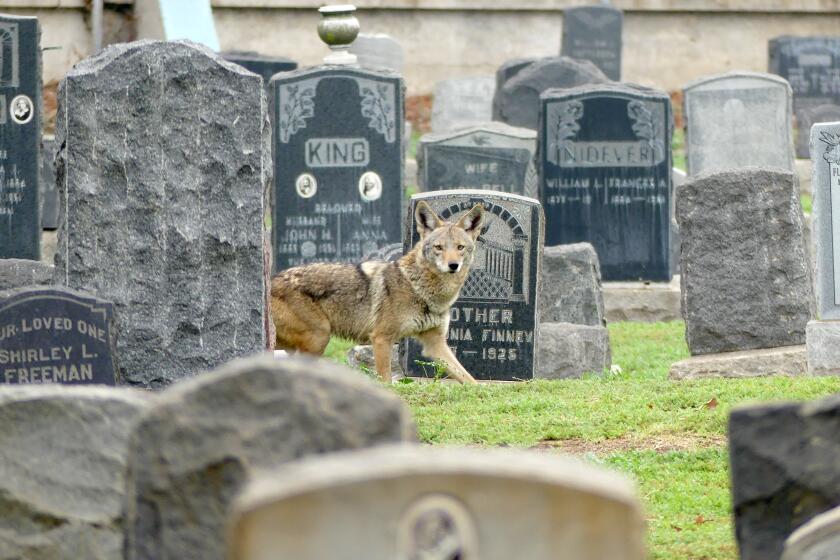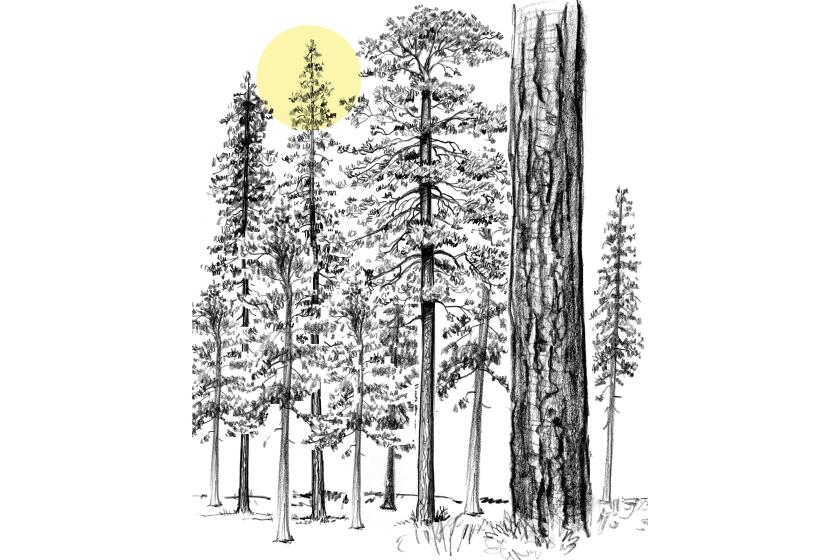Mountain lions face greater risk of becoming roadkill in wildfire’s aftermath, study says
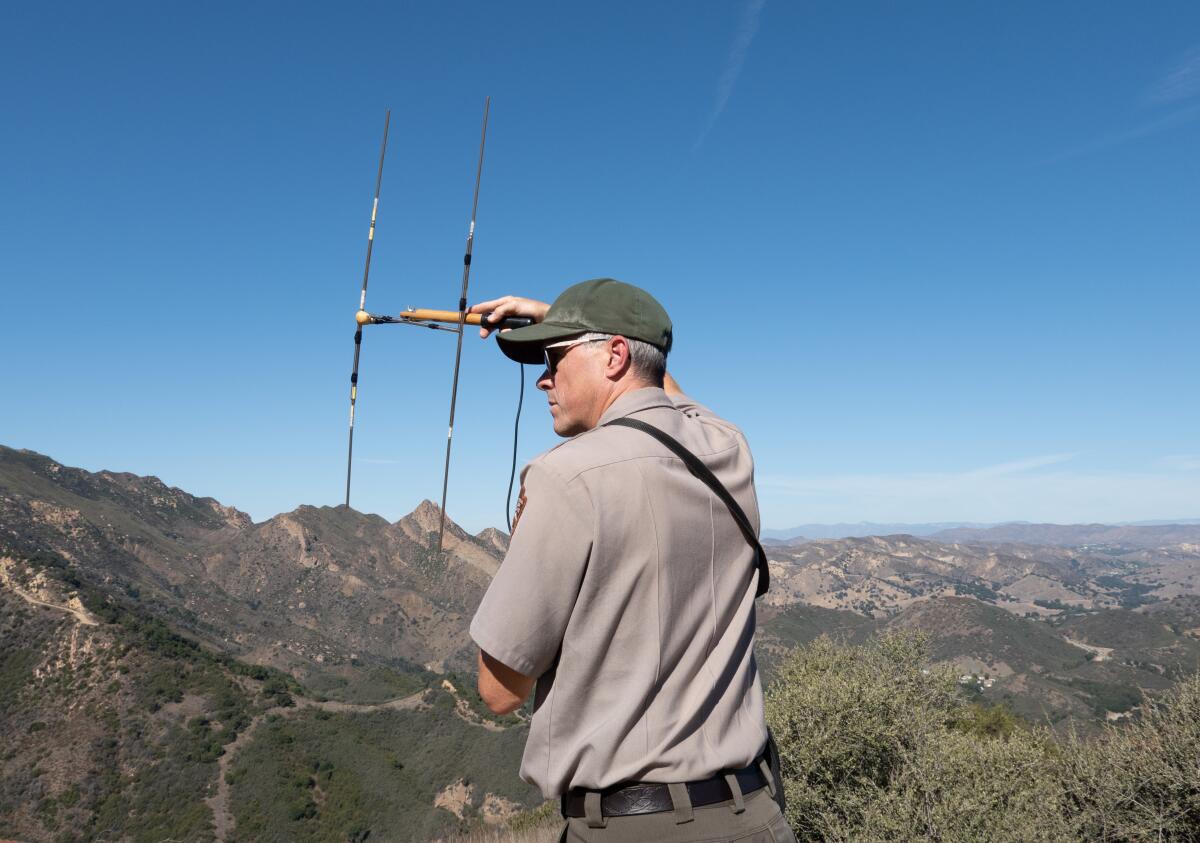
- Share via
Conservationists have long warned that Southern California mountain lions could vanish within decades due to inbreeding and loss of habitat. Now, biologists have identified another threat that could hasten their demise — extreme wildfires.
In a paper published Thursday in the journal Current Biology, UCLA researchers found that the 2018 Woolsey fire had greatly increased the odds of a mountain lion being struck fatally by a motorist or killed by a fellow panther in a territorial dispute.
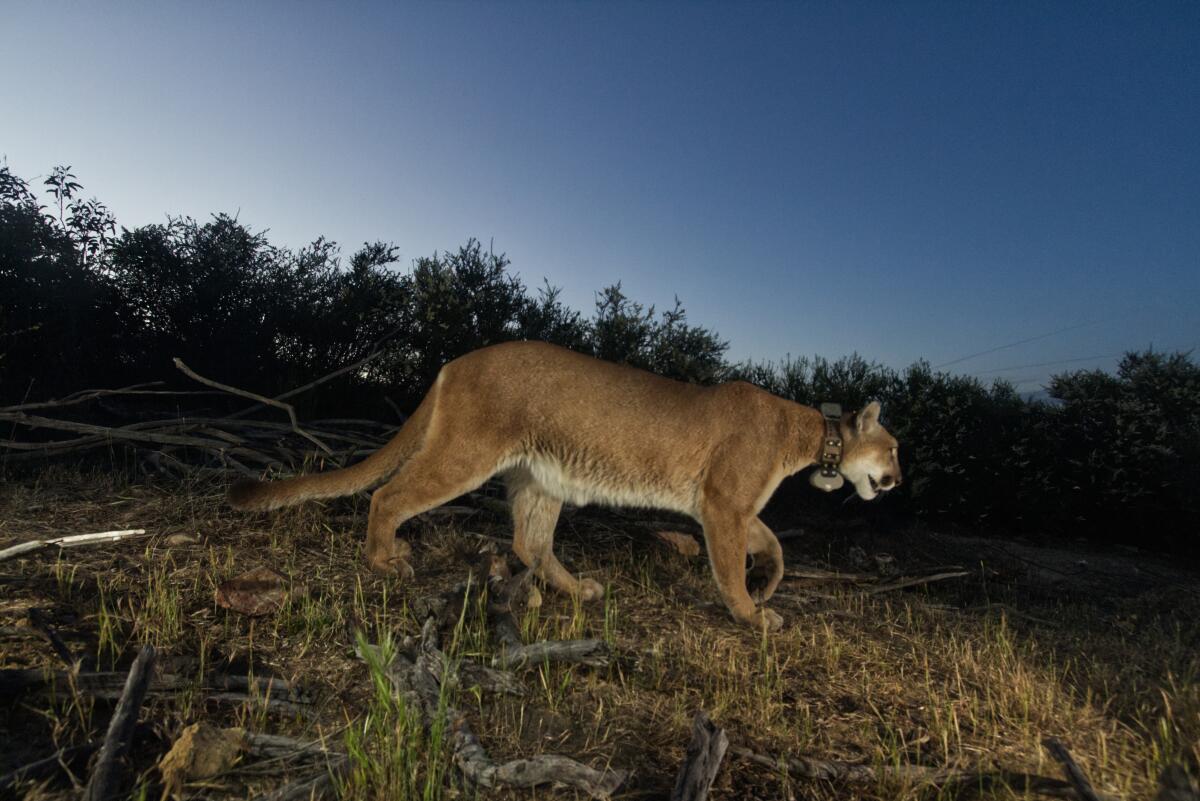
The reason? Mountain lions were so eager to avoid the 100,000-acre burn zone that they chose instead to cross busy roadways within the Santa Monica Mountains or enter the hunting grounds of other adult pumas.
The research paints a grim portrait of the mountain lion’s struggle for survival as its habitat is increasingly limited and divided by development. It also raises concerns about the potential effectiveness of a long-planned wildlife crossing that seeks to provide mountain lions with safe passage over a 10-lane freeway, in part so that they can mate with pumas from other areas and increase genetic diversity.
A war on urban coyotes is exposing deep divisions between those who want to eradicate the animal and those who are calling for peaceful coexistence.
The researchers found that in the 15 months after the fire burned from the Simi Hills of Ventura County to the beaches of Malibu, potentially lethal road and freeway crossings by radio-collared mountain lions increased from three to five per month.
They also found that the distances the animals roamed had doubled — growing to 342 from 155 miles per month — greatly increasing the risk of deadly clashes between mountain lions over shrinking territory.
The UCLA study suggests that the changes in behavior by mountain lions are probably due to a complex trade-off balancing the necessity to acquire food and breed against avoiding encounters with humans in the fire-stripped mountainous landscape.
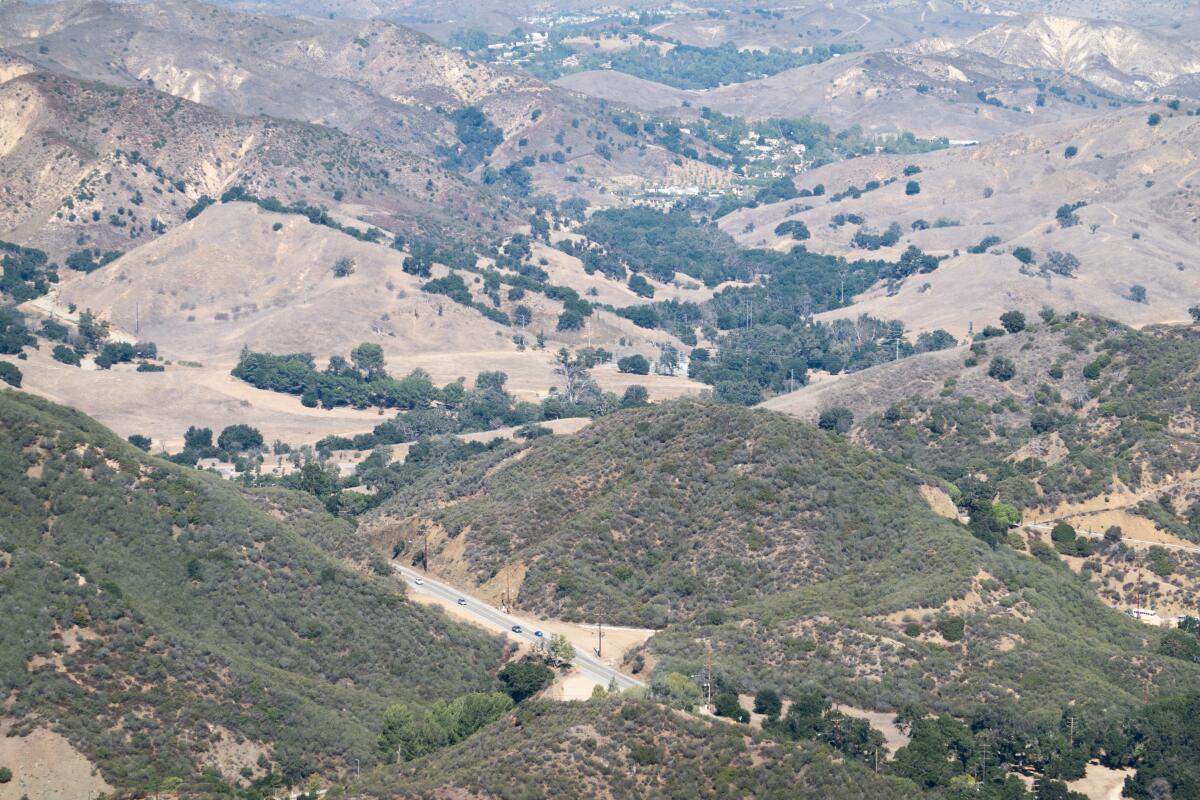
Ambush predators such as mountain lions, lynx and African lions require the cover of dense native vegetation to successfully stalk prey and avoid territorial disputes, a major cause of mortality among young cougars in the Santa Monica Mountains.
However, one habit that hasn’t changed is the species’ strong aversion to heavily populated urban centers. After the Woolsey fire, the study says, mountain lions continued to spend only about 5% of their time in urban areas.
“The idea that mountain lions will run across freeways rather than take their chances in urban areas really reinforces how strongly mountain lions avoid humans,” said Rachel Blakey, lead author of the study,
“This is an important point,” she added, “because people who live in the urban-wildland interface often worry that large disturbances like the Woolsey fire could increase the likelihood of conflicts with predators.”
As California struggles with an increase in extreme wildfires, researchers are studying exactly what a healthy or fire-resistant forest looks like.
But the behavior shift that researchers observed could hinder human efforts to restore gene flow among the small, isolated populations of cougars trapped south of the 101 Freeway in the Santa Monica Mountains and cougars confined to the north in the Simi Hills and Santa Susanna Mountains.
Specifically, the planned Wallis Annenberg Wildlife Crossing, which will cross the 101 Freeway at Liberty Canyon Road in Agoura Hills, is located in the Woolsey fire burn scar.
Is it possible that mountain lions might not use the 200-foot-long, 165-foot-wide bridge if they are avoiding the burn zone?
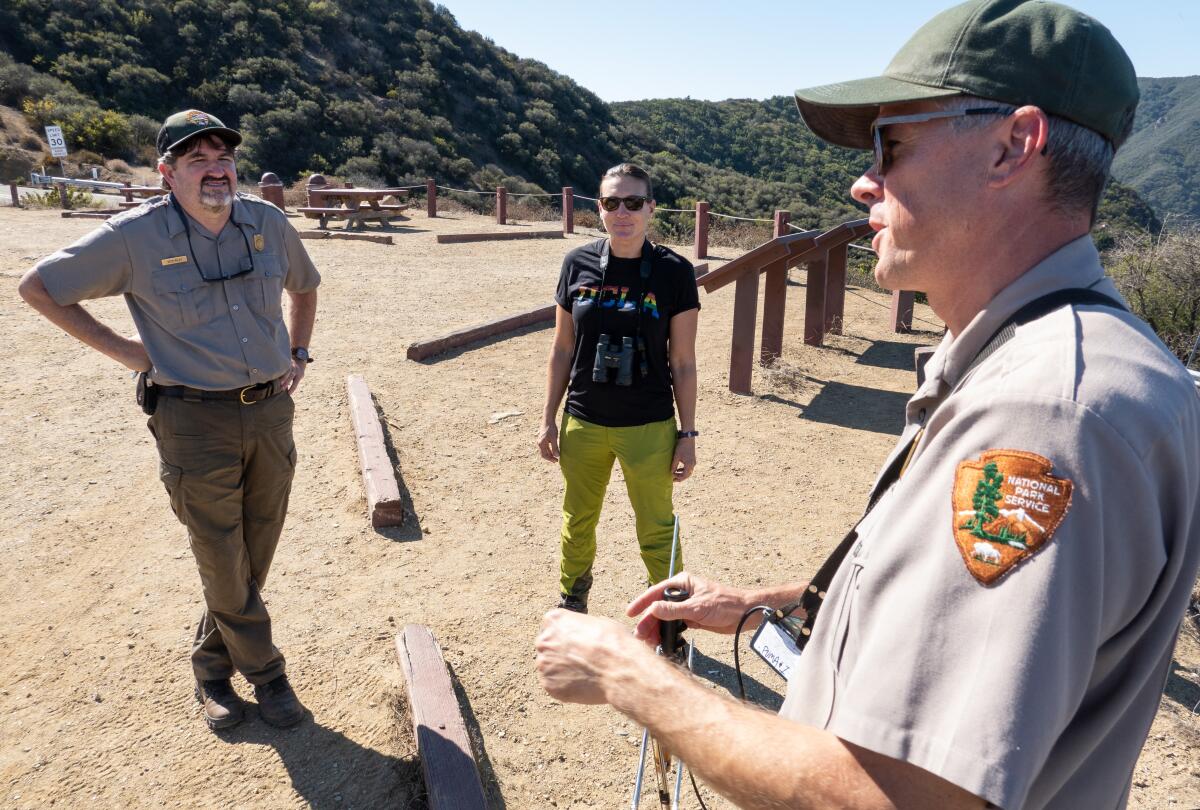
“That’s a fair question,” said Seth Riley, a biologist with the National Park Service and co-author of the study. “We hope that doesn’t happen.”
To date, more than 5,000 individuals, foundations, agencies and businesses from around the world have contributed more than $92 million for the project.
When it is completed in 2025, the bridge will be the largest and most expensive of its kind in the world — and the only one designed to save a species from extinction.
“All it takes is a mountain lion crossing the freeway safely every few years to spark the kind of genetic dispersal they so desperately need to survive,” Riley said.
Officials at the ports of Los Angeles and Long Beach recorded an unprecedented surge in harmful emissions during 2021. They blame COVID-19.
Recent scientific studies suggest there’s an almost 1 in 4 chance that Southern California mountain lions, which have the lowest genetic diversity documented for the species aside from the critically endangered Florida panther, could become extinct in 50 years.
The increased risk-taking of mountain lions after the Woolsey fire adds to an already long list of threats.
P-54, a 5-year-old female mountain lion struck and killed by a vehicle earlier this year on Las Virgenes Road in the Santa Monica Mountains, was pregnant with four kittens. All five animals tested positive for rat poison, National Park Service biologists said.
P-54’s mother, P-23, was hit and killed by a vehicle on the same road in 2018. One of P-54’s offspring, P-97, was killed by a vehicle on the 405 Freeway in April, the biologists said.
State officials in 2020 concluded that six isolated and genetically distinct cougar clans from Santa Cruz to the U.S.-Mexico border make up a subpopulation that might warrant listing as threatened under the state Endangered Species Act. Such a step could limit highway construction and development on thousands of acres of real estate.
The move to list the clans as threatened followed a petition submitted by the Center for Biological Diversity and the nonprofit Mountain Lion Foundation, which argued that the populations constitute an “evolutionarily significant unit” that should be protected.
The California Fish and Game Commission is weighing a final decision on the matter.
On Wednesday, Blakey, Riley and Jeff Sikich, an expert on the mountain lions of the Santa Monica Mountains National Recreation Area, stood on a ridgeline and gazed across steep slopes, valleys, oak forests and chaparral still recovering from the Woolsey fire.
Using a telemetry antenna, they detected the pings of two radio-collared survivors prowling in the distance, just a few miles apart: a male and a female mountain lion.
“It’s an incredible privilege,” Blakey said, “to live alongside these predators in Southern California.”
